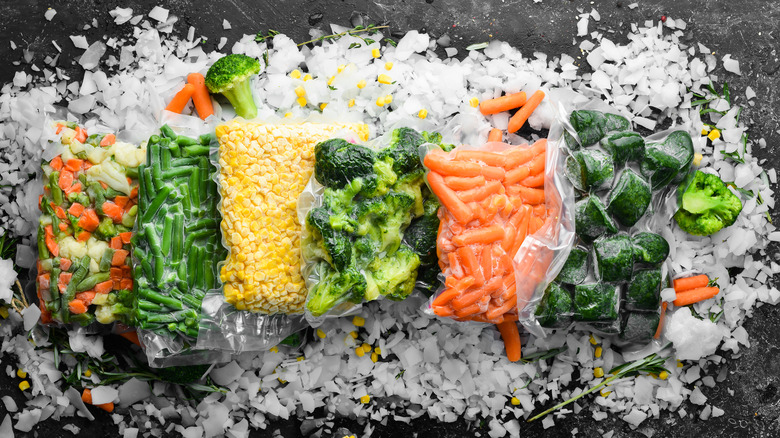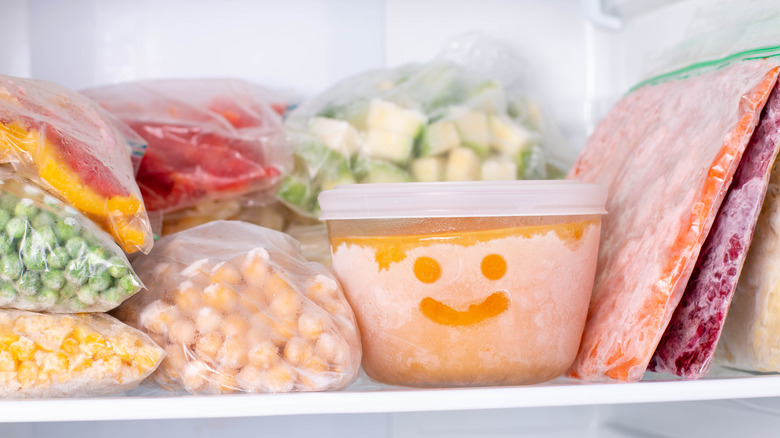Frozen Food Was Just Crowned Japan's 'Dish Of The Year'
When some people think of Japanese food, the impeccable sushi served from a small counter comes to mind. Others envision a steaming bowl of ramen that offers comfort with just a whiff of aroma.
As CNN explains, Japan's Gurunavi Research Institute compiles popular restaurants across the country. Once a year, the company releases its "dish of the year." The brand crowned chicken breast champion in 2017, mackerel best in 2018, and tapioca tops in 2019. But for 2022, Japan's dish of the year takes a chilly path towards a bigger conversation about food, lifestyle choices, and convenience.
As reported by NHK World Japan, the Gurunavi Research Institute named frozen food Japan's 2022 dish of the year. After compiling search results and questionnaire responses, it was determined that cooking habits have evolved since the onset of the COVID-19 pandemic. From professional chefs freezing dishes to maintain their flavor to cooking convenience for families, Japanese consumers have changed their food habits. By picking this item as Japan's dish of the year, the Gurunavi Research Institute might have opened the door to a bigger food conversation beyond a particular trend. In some ways, the choice reflects not only an impact to Japan's restaurants but also to the home cook. But this frozen food isn't the TV dinner of yesteryear. Flash-frozen, easy-to-prepare, restaurant-quality dishes enjoyed at home might be the new form of convenience food.
Could Japan's 2022 dish of the year represent a different food trend?
When CNN reported on Gurunavi Research Institute naming frozen food as Japan's 2022 dish of the year, some people might have seen a bigger food trend emerging. The outlet noted that Japanese families' spending on frozen food increased by 20% between 2019 and 2021. In addition, various food companies increased their frozen food offerings.
CNN asserts that these changes stem not just from pandemic influences but also from changing gender roles. And in some ways, that statement sounds similar to the first U.S. promotions of the frozen TV dinner back in the 1950s.
As History.com chronicled, Swanson's marketing campaign for the original TV dinner focused on a convenient, cost-effective dinner that gave busy women a break from preparing that nightly meal. Although the old-school, multi-compartment frozen feast is different from the Japanese 2022 food trend, the underlying reasoning has a common thread. It takes time to shop, prep, and cook food. When someone else does the heavy lifting, consumers will often take that helping hand.

